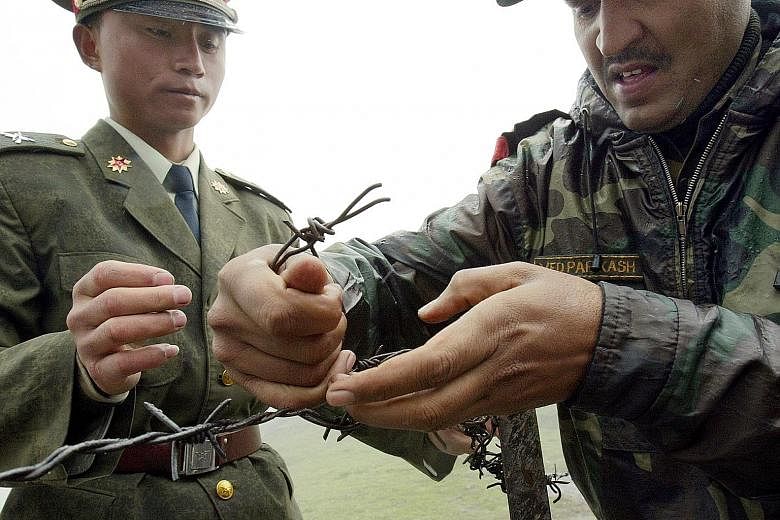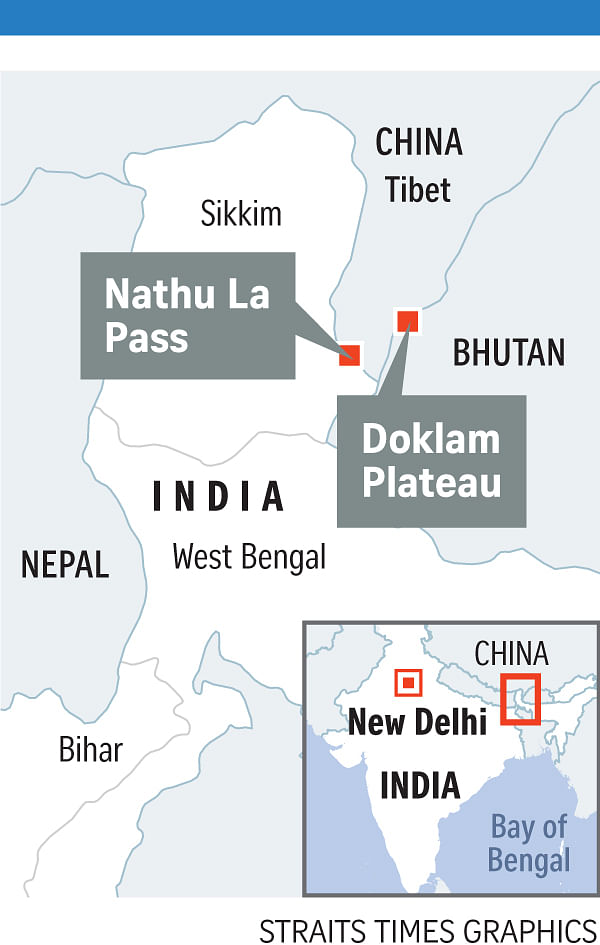For more than a month, Indian and Chinese troops have been squaring off over a small Himalayan plateau in the worst military stand-off in years between the Asian giants.
The cold, remote Doklam Plateau is claimed by China and Bhutan. But Beijing and New Delhi, which is supporting Bhutan's claim to Doklam, have shown no sign of backing down and no diplomatic solution is immediately in sight. Yet tiny Bhutan, the landlocked Himalayan nation at the centre of the row, has largely maintained its silence.
Some analysts believe the stand-off is really about Bhutan, a country that is India's closest ally in the region but which has also been on China's radar. Bhutan does not have diplomatic ties with China.
The nation acts as a buffer between India and China, which fought a brief border war in 1962 that India lost. The two nations have disputes in several areas along a 4,000km border.
Doklam is also near the junction of India, China and Bhutan, and close to the so-called chicken's neck - a 20km-wide corridor that links the Indian mainland to its seven north-eastern states.
The stand-off was triggered by Chinese construction of a road on the Doklam Plateau. On June 16, India sent troops into the area, with China claiming Indian soldiers halted the construction. New Delhi has said the road construction threatens India's security.
"It is not just the Doklam border issue. The entire thing is about focusing on Bhutan... to change the status quo or create a rift between India and Bhutan... that is the real game," Professor Phunchok Stobdan, senior fellow at India's Institute for Defence Studies and Analyses, told The Straits Times.
"A whole lot depends on how Bhutan responds. Maybe they want to have a neutral status, which is (at present) so much in favour of India. China wants it to change, but the question is: Do the Bhutanese also want to change it?"
Since the stand-off started, Bhutan's foreign ministry has released just one statement urging China to maintain the status quo, while lodging a protest with China over the road construction.
Former Indian foreign secretary Lalit Mansingh believes China wants to establish ties with Bhutan, which has not joined China's One Belt One Road initiative.
"With the One Belt One Road project, China has managed to get the support of all our neighbours with the exception of Bhutan... out of loyalty for India, Bhutan has not joined the project," Mr Mansingh said. "India has invested in Bhutan and is buying power (electricity) from them. The former king had no doubt that it was in the best interest of Bhutan to keep relations with India as close as possible. And that has continued. And the Chinese... want to create a rift."
Most people in Bhutan support close ties with India, but there are sections of society who feel that Bhutan needs to establish diplomatic links with China.
Bhutan, with a population of 797,765, was cloistered for many years and started opening up slowly to the world only a decade ago.
Ties between India and Bhutan have been guided by a friendship treaty that, till 2007, said India would guide Bhutan's foreign policy. In 2007, that was updated to close cooperation on foreign policy matters.
Still, the current border dispute has unnerved the Himalayan country, which does not want to be drawn into a row between its two large neighbours
"I would say Bhutan has done well, so far, to avoid both the fire from the Dragon on our heads and also the Elephants' tusks in our soft underbelly," wrote Mr Tenzing Lamsang, editor of The Bhutanese newspaper in an opinion piece on July 8.
Part of India's military response can be explained by the government's concern over China's growing influence in the region. China has bankrolled massive projects, from developing a port in Sri Lanka to upgrading infrastructure in a disputed area in Pakistan that is claimed by India.
With Bhutan at the centre, the stand-off looks nowhere near being resolved. Both sides have refused to step back and have, instead, urged the other to withdraw troops.
Analysts believe the stand-off would continue till the Chinese Communist Party holds its 19th National Congress, where President Xi Jinping is up for re-election. "I don't see any flexibility in the Chinese position till the 19th Congress in November is over," noted former national security adviser Shiv Shankar Menon, speaking to the Indian Association of Foreign Affairs Correspondents recently.
Mr Mansingh said: "I think China will keep talking tough till the Congress. Xi Jinping would not want to be seen as weak. When winter comes, the heights are automatically off limits to armed forces as the place is covered with snow. They (both sides) will automatically withdraw."


